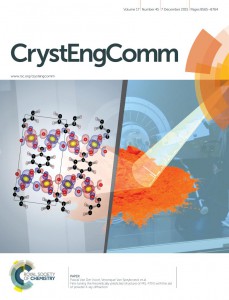The Quantum & Artificial inTelligence design Of Materials (QuATOMs) group was launched in October 2022. It’s part of the research group of materials chemistry in the faculty of science at UHasselt, and embedded in the Institute of Materials Research (IMO-IMOMEC). It is an interdisciplinary computational materials research group with interest in both materials physics and materials chemistry.
The research of the QuATOMs group is organised around three pillars:

1. Quantum Mechanical Modeling
(c.q. Density Functional Theory, DFT),
The quantum mechanical pillar focuses on the (high accuracy modelling of) electronic, vibrational, and geometric structure of materials, and the development of conceptual DFT methods for characterization of experimentally relevant properties such as reactivity, atomic charge and polarization. For these topics, the research builds on existing experience with dens solids like diamond and cerium-oxide, but also more soft hybrid materials (in particular Metal-Organic Frameworks, which present strong similarities to hybrid perovskites) and molecular crystals.

2. Artificial Intelligence (AI) modelling using small datasets
The artificial intelligence pillar focuses on the development of machine learning algorithms that deal with very small datasets (<50 samples). These can be experimental or theoretical in nature (as these algorithms are data agnostic in general). Our aim is to further improve these models aimed at lab scale experimental materials optimization applications. In addition, we intend to extend the applications also in the area of DFT generated data, thus creating a computationally cheaper alternative or extension for our DFT modelling.
 3. Experimental-Theoretical collaboration for corroboration and elucidation of experimental results.
3. Experimental-Theoretical collaboration for corroboration and elucidation of experimental results.
This third pillar brings the former two in contact with experimental reality. It is aimed as a proving ground for developed methods, as well as a contact point for experimental colleagues interested in computational corroboration and/or elucidation of experimental findings. Based on the range of materials dealt with in the past, this means support is available for a broad range of materials investigated within the departments of chemistry and physics: diamond in the context of growth, bio-applications, eutectic solvents for batteries, Metal-Organic Frameworks (and similar hybrid perovskites), bio-based polymers, …
These three pillars are intertwined with the central aim of developing methods for materials modelling and characterization, where the strengths of DFT and AI are combined to provided fast and high quality interpretation of experimental observations.
Group members
Current
- Prof. Dr. Dr. Danny E. P. Vanpoucke (Principal Investigator)
- Emerick Y. Guillaume (PhD-student, expertise: diamond growth & lignin polymer building)
- Thijs G.I. van Wijk (PhD-student, expertise: diamond defects)
- Dr. Pauline Castenetto (PD, expertise: DFT modeling of lignin)
- E. Aylin Melan (MSc Materiomics student, expertise: diamond defects)
Former
- Dr. Filippo Morini, (PD, expertise: quantum chemical modeling of lignin)
Research Projects QuATOMs
- QuantumLignin [BOF-KP: 2024-2028]
- AI-accelerated quantum mechanical modeling of the optical properties of semiconductor materials [BOF-BILA, UHasselt/UNamur, 2024-2028]
- Augmenting DFT modelling of vibrational spectra through Machine Learning and Deep Neural networks using small data sets. [2023-2027]
- DigiLignin: Digitization of lignin polyurethane development [Bio-Economy, 2022-2024]


 3. Experimental-Theoretical collaboration for corroboration and elucidation of experimental results.
3. Experimental-Theoretical collaboration for corroboration and elucidation of experimental results.